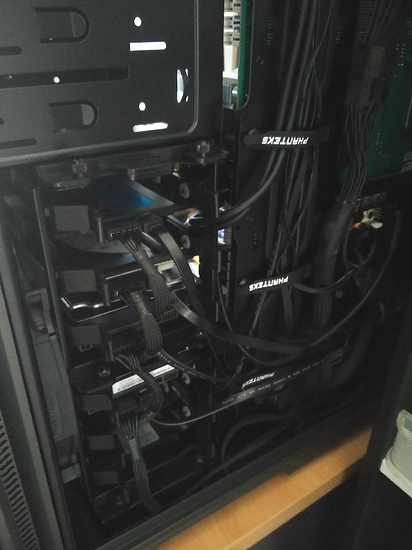Hi there Lvl1, first time poster here so hi to everyone and thanks for showing interest in my most recent build. Bit of a background to this, I'm a bit of a hardware nut and was a lot of a gamer during my college years, I should first off state the purpose of this build is DEFINITELY NOT primarily as a gaming PC because I already have one of those, but rather its going to serve as a bit of a playground & learning tool for me to use with things like Linux, dev stuff, video editing, making copious VMs for a variety of different purposes etc.
Always had a strong interest in IT and Computer Science, I went to college to study the latter and failed in my third year because I spent too much time playing Path of Exile rather than writing C++ for my angry professor. As of last year I moved back to my hometown and have been working ever since just to regroup and earn a bit of cash before the next big life milestone of maybe reattempting tertiary education. About halfway though 2016(I think?) I saw the price of E5-2670s get to ridiculous levels and as such was inspired by the amount of people using these awesome chips in budget builds. I saw the bandwagon and said "hey why not, nothing else to do" so I ordered 2 of them for $70 each on Natex and things were now in motion. I won't break down the budget of this build ITT because I forget what it totalled at but it was less expensive and more fun to build than my gaming computers, I think it was just under 2,000 AUD.
Parts breakdown:
CPU(s): Dual Intel Xeon E5-2670's with SR0KX stepping (VT-x & VT-d supported)
Motherboard: AsRock Rack EP2C602-4L/D16 (Originally I had wanted a gigabyte 7PESH1 because blue but they were too expensive and too rare, plus they had terrible reviews for some reason, so the Asrock seemed like the smarter choice, have to say I have no regrets about it)
RAM: 128GB Hynix DDR3 1600MHz ECC. (To keep more than one firefox tab open without using swap space lmao)
GPU: Gigabyte G1 Gaming GTX 1060 (Originally I purchased a 1070 at the same time as the rest of the components but had plans to use that for upgrading my other rig, the 1060 came later.)
PSU: EVGA Supernova 850W - In Aus, these are the only PSUs I could find with out of box support for two CPU power headers.
Storage: Kingston HyperX Savage 240GB SSD - Looking at getting more drives to fill up the ridiculous amount of SATA slots in future.
Important Add on cards - Asus Xonar DG for sounds as motherboard has nothing to make noises with & a Silvestone ECU05 Usb card to compensate for no USB3.
Cooling: 2x Kingston Hyper212 X. (CHEAP!)
Case: Phentoo Pro in Titanium Green
The Build
Naturally the first part of the rig to arrive was CPU's because they were the first ordered, nothing I could really do with them and my "new" hardware-boner quickly subsided when I realised that, they then sat idle for a long time because I had nothing to do with them for a bit. RAM came surprisingly quick, was the second item I ordered, shipped overnight from Hong Kong, Third was the case.
Funny story about the case, originally it was purchased by my uncle for his hackintosh. However he didn't like the color so I offered to take it off his hands and had him ship it over to me from Scotland. He waived my payment and told me "Happy Birthday" as it was indeed coming up to the date, (coolest uncle ever) but I still had to pay and arm and a leg for shipping, but the Green version of the Phen Pro isn't sold locally, the Pro M is but I need support for SSI-EEB. Uncle now has a Phen Primo, he also plays another role in this build which I will get into later.
After this was again a bit of a dry period of waiting around for more parts, the mobo was key and yet it would end up being the slowest thing to be delivered. Next up I ordered parts from the Aus domestic market. Ty based PcCaseGear.
On many occasion in the past I often get a lot of parts at the same time which makes for great fun when trying to figure out cable management ad-lib. Because I didnt have all my parts ready to roll I decided some pre-emptive cable management was in order, seeing as I had both PSU and Case, and some lovely sleeved Phanteks extension cables.
Not my best work but still pretty good, this case was extremely good for cable management and was a pleasant building experience overall, my motherboard 24 pin extension was probably too long in hindsight but that is better than two short, USB front I/O barely reaches the ECU05 when that was all installed so I left it unplugged, fixed that later though, neat little fan controller proved to be useful too. Now it was just a several week wait before my motherboard arrived and then it was time to fire it up
Motherboard was a bit tricky though. Due to lack of anything in stock and Australian prices I purchased the motherboard from amazon UK. The store that sold it had ONE left, which was mine. They were also the cheapest I saw except they didn't ship to Aus(not cheaply anyway), however I had a bright idea. My father had pre-planned a trip to visit my uncle, so I ordered it to be delivered to my uncles home address and have my father just have it piggyback a ride down under. It took ages to arrive but when it did I was taken aback as to how huge it was. It did look nice though.
CPUs Go in:
Heatsinks Go on:
(This was a lot less fun than I would have though, apparently this motherboard doesn't require the backplates of these sinks to be installed and i was baffled as to why there where little rubber blockers in the holes of where the backplate was supposed to go, as if they were sandwiched in place by the PCB layers.)
Then it was time to box her up. This I cannot emphasise enough was HARD. Once all your standoffs are installed and the motherboard is ready to be dropped in, I couldn't typically do what I usually do and drop it in at an angle slowly with the lower side of the motherboard in place at the IO shield, my hand wouldn't fit in the case at the same time to gently ease it in. Some metal edges on the motherboard caught on the 5.25" bay and scratched the paint during this process. On my first attempt I accidentally sandwiched the 24 pin between the case and the motherboard so I had to unscrew and start over because I didn't even realise. Also the fully laden board was heavy.
Really diggin the PSU shroud btw.
Then, finishing touches...
1070 and add on cards go in.
Done.
The next few weeks I got caught up with work and never really ended up toying
with whatever OS was going to go on it. At work I picked up a copy of Win10 Pro (I also sell computers) and went home one day ready to install & fire her up only to be greeted by NMI_HARDWARE_FAILURE blue screen about 2 seconds into boot (server hardware isn't for everyone). I suspect an unsupported INF driver was the cause of this. Needless to say I've hated win10 since release, and then I went and watched some Level1Linux vids and distinctly remember Wendell saying that he personally doesn't like letting windows have control over the bare metal of computers (think it was his kvm/qemu vid for reference). So I install Ubuntu 16.04.
I had used linux ONCE prior to this and was still a massive noob. Fortunately one of my friends from uni showed me the ropes and I picked it up pretty fast. My friend also made use of this machine a lot for some crazy deep learning stuff that involved pycuda and was way over my head. Said the processing power was great. Not long after this I managed to break Ubuntu by enabling VT-x in my motherboards bios (Motherboard has the most fantastic BIOS I've ever seen, crazy levels of options). Weird. So I installed Manjaro which, now having a bit of experience with Linux under my belt. Manjaro is sensory chocolate (The green Vertex Maia theme also suits the colour of the computer). I love using it and this machine is now my pretty much daily driver unless I want to play games.
Here is a recent benchmark I did with Cinebench on Wine. Not bad for $140 of CPU.
So, what now?
Well. QEMU/KVM gaming VMs would be nice. It's gonna happen. But I just have to figure out how.
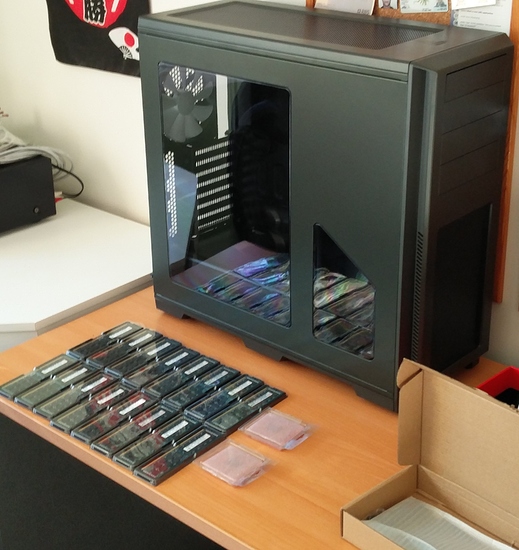
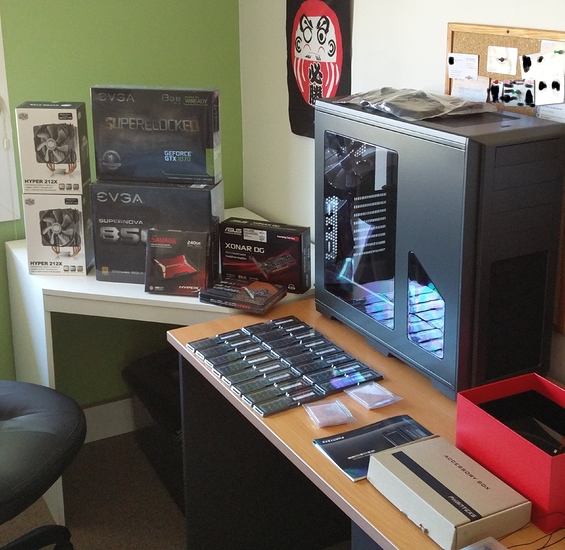
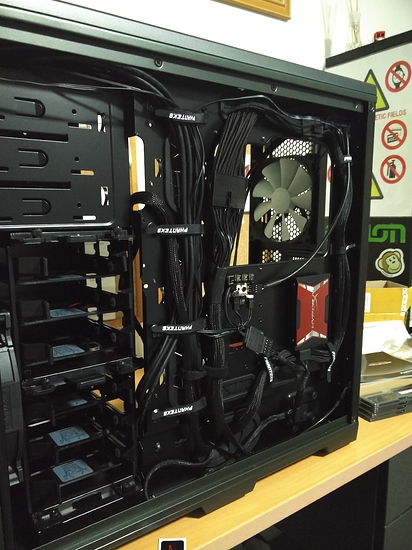
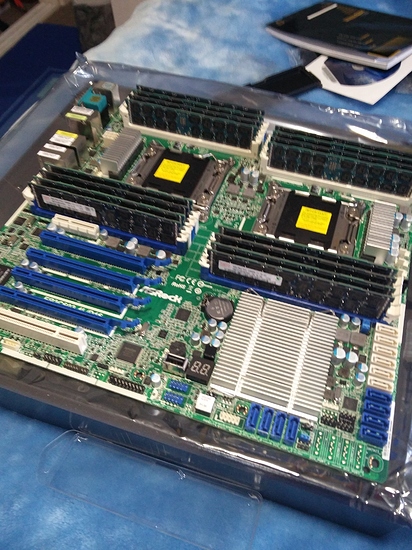

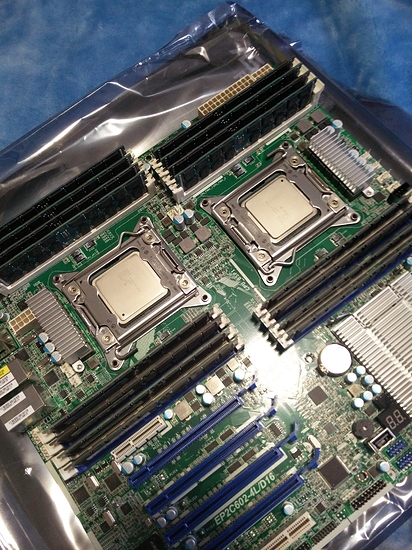


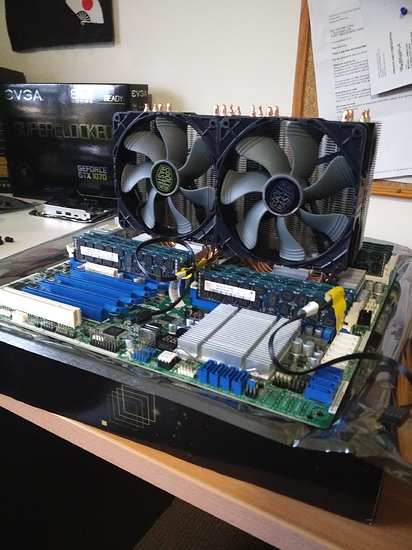
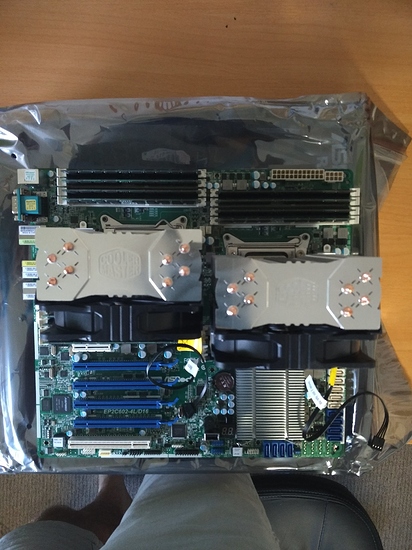
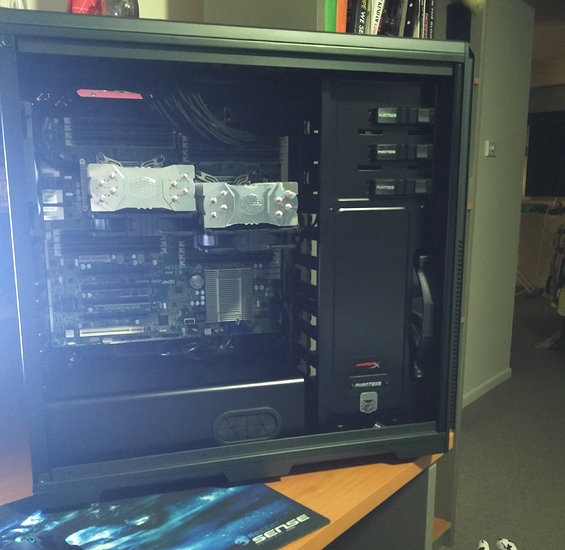

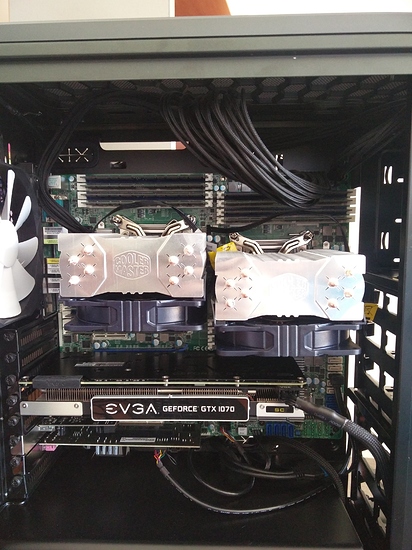


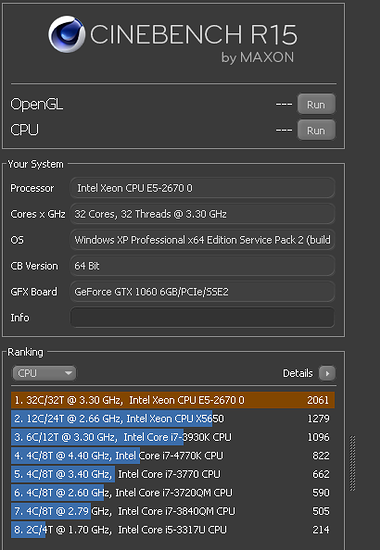
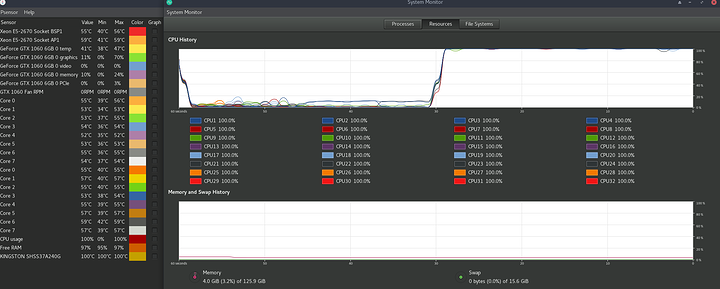
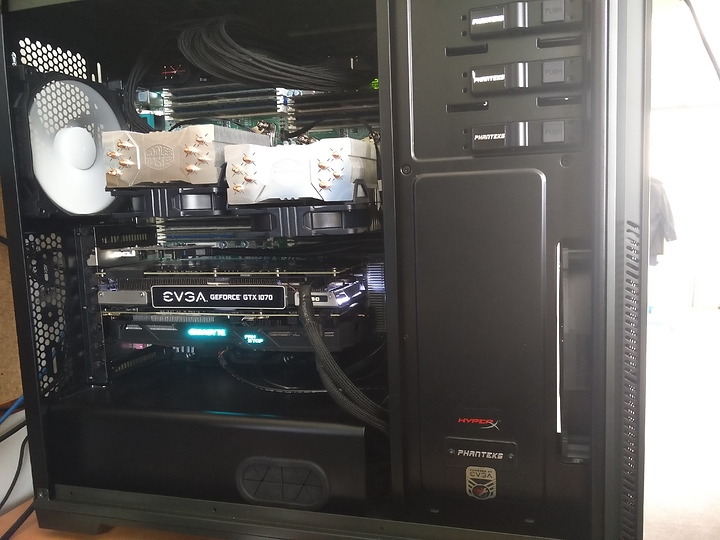
 ) and the sound card still in the bottom PCI lane. The 1060 is in 8x configuration and the 1070 is in 16x. Two of my ram sticks in channel H are now dead for some reason too, meaning my 128gb is now 112gb. I will get a few replacement sticks probably next paycheck.
) and the sound card still in the bottom PCI lane. The 1060 is in 8x configuration and the 1070 is in 16x. Two of my ram sticks in channel H are now dead for some reason too, meaning my 128gb is now 112gb. I will get a few replacement sticks probably next paycheck.